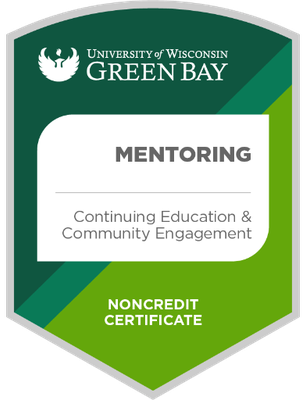Your Name As A Brand

AI-generated image of people walking down the street wearing clothing with ME on it generated by ChatGPT
One of my neighbors back in Chicago shared his last name with that of a popular apparel brand. On occasion I would see him and his family wearing that brand of clothing, and I always thought that was wicked cool. I never lamented there is not a clothing line with my last name, nor did I go to the extent of visiting one of the myriad of customizable clothing Web sites out there and order something with “MADDALONI” blazoned on it. Buying existing clothes with your name, that’s ok. Ordering your own clothes with your name, that’s a little much, even for me.
My surname is far from mainstream, but it is not entirely uncommon. The etymology of the name is not surprisingly Italy, and there are communities that bare my surname. Where I personally have never met other Maddalonis who are not a relative, I have connected with some online. I got a LinkedIn connection once from a college student who, as a youth, when he would Google himself my name would always come up, so he thought he’d connect with me. Yes, there are others named Mike Maddaloni out there, including him and the retired Secret Service agent whose book I read and shared my takeaways from years ago.
The name Maddaloni applied to people, surely. But attached to products?
Finding Myself
A holdover from the days of when I was actively managing my personal brand is Google Alerts for my last name. This free service from the Big Tech giant will send you a daily email of any mention of any string, phrase, name, etc. that appears new in the annals of Google’s databases and models. I’ve kept it running, for every once in a while, some Web site appears with a mention of me in it. These days those are rare, and most often the links include an Italian DJ/producer and a Long Island, New York based jewelry store. They have also informed me of long-lost relatives who have died.
The other week I got a Google Alert with a link to my last name on something I wasn’t expecting: a ductless island range hood in stainless steel.
The link in the Google Alert was to the above-shown listing on Home Depot Canada’s Web site. Upon further searching I found other links for this device for sale including on what appears to be the manufacturer’s Web site where other products are named after what also appear to be names that sound Italian.
I was tempted to contact the maker of this appliance, however after a past experience of a similar inquiry I decided not to.
If you think a range hood is random, how about a bikini bottom?
As the father of daughters, the last thing I ever want to be thinking about is bikinis. But there it was, a bikini bottom with the same name as said daughters.
The link was to the Web site of Silvia Tcherassi, a Columbian fashion designer. Captivated by this, I reached out to the email addresses listed on the Web site of her US-based headquarters to ask why my last name was tied to such an itsy bitsy teenie weenie product, however I never got a response. Where the item is no longer available on her Web site, you can see the (un)fortunately sold-out swimwear on Saks Fifth Avenue’s Off 5th Web site.
Deconstructing Your Name as a Brand Name
Many desire to see their name in lights, and others do not. Even when you do, seeing it in or on something can evoke emotions from amusing to embarrassing. Although I may not be buying my eponymous range hood, not am I not sadden by the unavailability of these bikini bottoms, it’s intriguing to know they are out there. Google Alerts and similar Web searches can alert you to what to look for, or what to simply avoid. Do you have Google Alerts for yourself, or have you searched on your name lately? I welcome you to share your thoughts – with or without your name – in the comments of this post.
This is from The Hot Iron, a journal on business and technology by Mike Maddaloni.
Did you enjoy this? Subscribe to The Hot Iron by RSS/XML feed or Read by Email
Build • Business • Strategize • (0) Comments • PermalinkWhat I Would Do On Day One As A Scrum Master

Personally, I have never been one who goes by first impressions – sure, they are important, but the experience of the initial contact with someone shouldn’t determine the terms of a relationship. However, if by, say, day 100 you still have issues with someone, then there may be a larger issue, but I digress. That’s also not to say you shouldn’t start strong either.
This concept of first impressions came to mind when listening to an episode of a popular Agile and Scrum podcast the Software Process and Measurement podcast, or Sp&mcast. The host, Tom Cagley, someone I have learned a lot from by taking training led by him, posed a question to his guest from a listener who asked about what they would do on their first day as a newly-certified Scrum Master. My excitement to hear the guest’s thoughts quickly faded as their answer didn’t help channel the listener’s recent “drinking from the firehose” introduction to Scrum, and if anything made it worse.
Realizing the guest missed the mark on the question, I asked myself, “Self, what would you do on day one as a Scrum Master?” I pondered this for a long while, taking into consideration my own training and certifications as both a Scrum Master and Scrum Product Owner plus hours of reading, listening and discussions on the discipline. I then wrote up these thoughts and send them to the Tom. Upon recently rediscovering that email, I share my 4-step agenda for that day here. Where I have tweaked some of the content, my initial approach and intent persists.
Let The Day Begin
The first thing I would do is sit down with my new reporting manager and be honest, saying, “Manager, I just finished this Scrum Master training, have all of this knowledge and now I have to learn how to use it.” I would give an analogy of taking a woodworking course: learned a lot, got a lot of tools and now I have to really learn how to use them on my own. I may not be able to build elegant, high-end cabinets from the start, but I plan to soon build something to hang on the wall to store things.
Up second is to become aware of any and all artifacts as part of the project (if there are any, but I will assume there are some). I said “become aware” as I would not read through in painstaking detail every user story right away, but I would want to know 1) if there are any and 2) where they are. Becoming aware of what exists will help with future steps.
Next it’s time to schedule the ceremonies – sprint planning, kick-off, daily Scrums, review, retrospective – if they already aren’t in place. If they are already in place, I would “take them over” by ensuring meeting invites were coming from me and I was scheduling them.
Finally in the first daily Scrum, I would let everyone know I will be scheduling individual meetings with everyone, and I mean EVERYONE, to make an introduction and start to get to know them. Whether in-person or virtual, I would like to get ahead of getting to know them. If in person, I will buy them a (insert favorite beverage here) or lunch. These meetings would be with everyone – the Product Owner, Dev Team, and people who are outside of the Scrum team but are related, including stakeholders, leadership, users, customers, janitors, et. al.! I have always found getting to know someone, especially in person, in advance of any issues is always best.
It's Good to Dream
As I revisit this, I realize I may never actually put this plan into action. Where it has been almost 5 years since I started on my “Agile journey” it has been mostly a trip in virtual reality. The catalyst for this was the directive at my job to become an Agile organization, so I went all-in. Perhaps it’s luck, fate or some other term I don’t need to dwell on now, but I have never truly put my own course of study into action in the role of a Scrum Master. And at this point with my evolving job, I may not have that opportunity. Though one should never say never, what I have learned is still valuable to me and I don’t have any reservations on my career journey.
Deconstructing Becoming a Scrum Master
Every journey begins – and continues – with one step. Starting out on the right foot, stable and strong, all the while managing each step as best as possible, helps you and your team succeed. This is especially important for Scrum Masters, especially as they have come under higher industry scrutiny as of late. Where I myself may not execute this plan, I put it out there for others to consider, and I welcome feedback as to how it worked for them.
This is from The Hot Iron, a journal on business and technology by Mike Maddaloni.
Did you enjoy this? Subscribe to The Hot Iron by RSS/XML feed or Read by Email
Business • Agile / Scrum • Strategize • (0) Comments • PermalinkRetail Returns Happen - Always Have, Always Will

AI-generated image of a mass of people returning merchandise at a store by DALL-E
Over the Christmas holiday last year, I started reading news stories regarding the increasing volume of returns to both online and brick-and-mortar retailers. In them they discussed the business and logistics of returns to how returns are mounting despite efforts by retailers to curtail them.
On the surface, it sounds like this is a relatively new phenomenon. Most people reading this post have likely returned something to Amazon or some other retailer recently or even this week. The volume of returns has been growing over the years, combining among other reasons the move to buying more items online that – though you can see pictures of it – you are not actually touching the item until you receive it, to simply more competition in the retail space, where you may find a lower price the next day.
However returning merchandise is nothing new. Where I am not a retail industry expert by any stretch, I’d like to share my unique point of view on retail returns as I had some education on this from my Aunt who years ago who worked for a local department store. She was a long-time employee of Steiger’s, a family-owned chain of stores in western Massachusetts and northern Connecticut. They had about a dozen stores in total before they closed down in the early 90s and sold off their stores to Filene’s, eventually to be engulfed by Macy’s.
What’s Old Is...
My aunt’s job at Steiger’s was processing returned merchandise at the company headquarters. Returns would come into her office from all of the stores. Some items were truly damaged or had some defect. Others were still new and just not wanted, and some were likely worn once and then returned as no longer needed. In some cases items were returned to the manufacturer, but often the maker did not want them back and would simply refund the store. Those items were kept and she facilitated a quarterly sale for employees where they could buy the items for pennies on the dollar of their original retail price. Needless to say, we had a lot of items around our house and clothes in our closet from those sales.
When I was old enough to understand about money and how much things cost, my Aunt explained to me about the business of returns and how that fit into the overall cost and pricing of merchandise. She told me, for example, if an item on the rack at the store had a sticker price of $100, the actual cost to Steiger’s for the item may have been as low as $10, of course depending on the brand. That allowed profit to be made with discounts that you see stores offering for 10% to 30% off right-away on new merchandise. It also allowed for profit to be made when the sticker price is reduced over time; even at 50% off a profit can be made. The items on a deep-discount rack were also helping the bottom-line of the store.
After my Aunt came over to our house with things she got from the employee sale – not going to lie, she would set aside things for her sister and niece and nephew – even then there was some profit made by the store. When manufacturers and wholesalers gave credit back to the store it was to offset the fact that they didn’t want the items back or it cost more to ship and process them than their actual value. Rather than throw them away, the 4 times a year sale became an employee perk.
... Not Necessarily New
Now fast-forward to present day. The 800 lb. gorilla in the room, Amazon, has been facing a growing number of returns as, well, people have been buying more from them. They have built an evolving infrastructure to manage them, from returns to Amazon lockers, Kohl’s department stores and UPS Stores to crediting your account now or doing a cash refund days later, to asking more and more questions as to why you are returning an item. Other online retailers are using third-party services for similar drop-off returns, as I have gone to random stores to bring back something from a random online site my kids bought from facilitated by some random service.
As mentioned in the above-linked articles, online and retail stores are also taking steps to try to curtail returns, from shrinking return windows, offering only credit for returns and using third-party services to track frequent returners. But long before Amazon was on the scene, I knew people who would often buy multiple items, say clothing, then try on at home and return the ones they didn’t want. This, of course, being something that required a physical trip to a store, not to mention a lot of time.
Today you can buy something from your mobile device in the time you are stopped at a red light (no, I have never done that, of course not!). The convenience and impulsive nature of doing so drives increased sales, and with that naturally comes the possibility for increased returns. Just this week I returned a lamp I got from my daughter that barely illuminated a small spot on her desk, something we couldn’t have known from the pictures or random reviews on the Web site. Other returns in my household have been for items that just didn’t fit right – how else would you be able to try it on without buying it first?
As I write this, it is a point in time. I am sure I, and everyone else in the world, will continue buying more and returning more. Also as I write this, I am awaiting my return home to a pair of sneakers I bought online... this is the second pair from them, as the one I bought last week were not the right side – I bought the size based on other models from the brand that always fit – and I hope these fit. If not, I am going to return them, likely paying shipping back as the exchange had no added shipping cost (for me) and shop a local store where I can actually try them on.
Do you think about retail returns as much as I have here? That or any other thoughts are welcome in the comments of this post.
Deconstructing Retail Returns
There will always be retail returns. No matter the reason, people want what they want and if they don’t want it they will return it. Efforts to curtail returns could have consequences, and likely will be eased in or built into alternative ways of doing business with a retailer. In a world where every store in the world is literally in the palm of your hand, a long standing part of commerce shouldn’t not be expected.
This is from The Hot Iron, a journal on business and technology by Mike Maddaloni.
Did you enjoy this? Subscribe to The Hot Iron by RSS/XML feed or Read by Email
Business • Strategize • Technology • (0) Comments • PermalinkWhy I Got A Certificate In Mentoring

A.I.-generated image by DALL-E of a mentor mentee discussion
Last fall I took a non-credit certificate course through the University of Wisconsin – Green Bay on mentoring. Why did I do this? Long time readers of this humble blog may vaguely recall me writing in the past pessimistically on the lack of mentorship in the technology field and the fact that I did not have a formal mentor at that time.
Where I’ve had many informal mentors that have been valuable to me throughout my life and career, I have never been in a formal mentor/mentee relationship. That being said, I’ve been told by many people specifically that I have been a mentor to them. In those cases it was not in a formal mentor/mentee relationship nor was I necessarily seeking that with them. Through all of this I knew there was more to mentoring and this was the catalyst for me taking the certificate course.
My greatest takeaway from the course was learning the optimal structure of a mentoring relationship between the mentor and the mentee. From the goals of both the mentee and mentor (yes, the mentor should gain much from this too!) to a formal mentoring agreement to the cadence and format of meetings the course gave me a true 360 degree understanding of mentoring. The course was organized into 3, 2-hour virtual sessions, with some attendees being local to northeast Wisconsin and others from around the US. There were guest speakers in each session sharing their experience on topics from process to ethics. Each session had pre-work including articles and exercises which lent to a great overall learning experience. I left with the tools to properly initiate and sustain a mentoring relationship. There was no exam at the end, however upon completion I was awarded a certificate suitable for framing and the following verifiable digital badge – click the badge below to see for yourself.
Now What?
So what do I do this? Of course I’ve added the digital badge to my LinkedIn profile, the About page here at The Hot Iron and my resume. My employer has no formal mentorship program so it is nothing I will be officially applying there but will continue to informally mentor staff and colleagues. There are mentor programs out there – for example, UW-Green Bay has one and is seeking volunteer mentors – however with my current schedule I decided not to pursue it, yet. Where I haven’t looked into mentoring programs a little closer to home (I prefer to meet people face-to-face whenever possible) that will be the path I will likely take to get into formal mentoring.
I decided to pay for this course myself, and at around $300 it was good value for the return. More information on the course is available on the UW-Green Bay Web site. As of writing this there is not a date listed for a future offering, however I’d recommend contacting them as I did to be in the know when another is scheduled. And feel free to tell them that I sent you.
Deconstructing Mentoring Education
Anything worth doing is worth doing well. As I felt this way about mentoring, I took this certificate course to get the tools and right mindset should the opportunity present itself, either as a mentor or a mentee. It was an enjoyable experience that has inspired me, at the right time, to pursue an activity I feel I will be good at.
This is from The Hot Iron, a journal on business and technology by Mike Maddaloni.
Did you enjoy this? Subscribe to The Hot Iron by RSS/XML feed or Read by Email
Announcements • Business • Thrive • (0) Comments • PermalinkBreaking A Work Promise To Myself

As the passing of the first third of the year is upon us, I am already breaking one of the 2 promises I made to myself at the beginning of 2023 regarding how I work. It was not a resolution, rather a small behavioral change for me to be more efficient and perhaps even more effective.
That promise was to not take any paper notes and only record things digitally.
Literally Getting Out of Hand
The genesis for this move was an ongoing pile of papers – some small Post-Its, others full notebook pages – that was becoming a bottleneck to reviewing discussions and even completing tasks. I would always have some form of paper at hand to scribble notes and manage priorities throughout the workday. I often found that taking notes by hand was more efficient in being active in meetings, an idea that has been reinforced by other colleagues and articles I have read.
For the most part this cutting out paper worked for me. I would still occasionally print a draft of a document for editing, but after applying those changes to the document file I’d promptly recycle the paper. Several times I consciously stopped myself from trying to write something down, a reaction I was able to curb by simply not carrying a notebook or paper with me. The notes I captured would go directly into my Microsoft OneNote file, which is where the written notes would eventually go as well.
Over time, there was one piece of paper I found that I needed to go back to keeping alongside me throughout the day – my personal dashboard. This is a landscape piece of paper, printed from an Excel file, with columns for projects or areas that I am working on and rows for high-level tasks or issues for each. It’s not a task list per se, rather something I refer to have everything I or my team are working on available at a glance. Thus the term dashboard applies well.
My current dashboard has 7 columns, with the last one being for “personal and professional growth.” It had 6 columns the other day, but as another project came to fruition it warranted its own column. As I am working on multiple projects with my goal to focus blocks of time on one thing at a time and avoid multitasking (as much as I can), the dashboard is a reminder of all else going on in my world.
A Break or a Bend?
Talking with some colleagues about this, there was doubt from them I was actually breaking a promise and instead bending it. To stop consuming paper was not the catalyst of this decision, but it was a nice by-product. However I consider it a break, and until I have a different system – or less going on at once – the dashboard will remain with me as I find it effective.
What was that other promise I made you may be asking? To stop asking people to turn on their cameras in work online meetings! By now, if people don’t want their camera on or realize the benefits to work culture, who am I change their minds? I have also been guilty of not having my own on as much as I used to, especially when I am the only person who turns their camera on for a meeting.
Deconstructing Breaking Promises
Looking back on my earlier decision, where I am somewhat disappointed I was not able to carry through with promise, it has certainly not broken me. Reevaluating earlier decisions or what we do is something we should actually take time out for rather than it be solely reactive and come from frustration or other emotions.
This is from The Hot Iron, a journal on business and technology by Mike Maddaloni.
Did you enjoy this? Subscribe to The Hot Iron by RSS/XML feed or Read by Email
Business • Strategize • Technology • (2) Comments • Permalink



